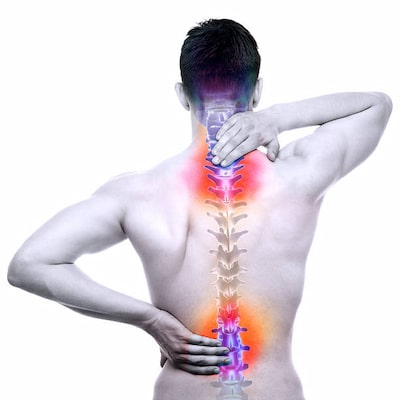If you’ve developed strange pains or other upsetting symptoms in an upper or lower extremity, you may have a common condition known as spinal stenosis. In this condition, the space housing the spinal cord grows increasingly narrow, and pinching the nerve tissue can cause neurological issues. The earlier you get this problem correctly diagnosed and treated, the more successfully you can arrest, manage, or even alleviate the symptoms. Let’s examine how you can identify the early signs of spinal stenosis.
What Is Spinal Stenosis?
The human spinal column consists of a stack of vertebral bones and discs. It also includes an open interior space to accommodate the spinal cord, the mass of nerve tissue that serves as the communications conduit between the brain and the rest of the body. In spinal stenosis, changes in the surrounding structures decrease this space, putting more and more pressure on the spinal cord. This problem is called spinal stenosis.
You can suffer from cervical, thoracic, or lumbar spinal stenosis, although the condition occurs less commonly in the thoracic vertebrae that make up the middle portion of the spine. Most sufferers develop the condition in the C1 to C7 vertebrae of the neck or the L1 to L5 vertebrae of the lower back.
Spinal stenosis often develops with age, with the risk rising after age 50. Common age-related causes include:
- Bony overgrowth such as bone spurs.
- Degenerative disc conditions such as herniated or bulging discs.
- Abnormally thick spinal ligaments brought on by arthritis.
Other causes can involve cysts, tumors, an acute spinal injury such as a fracture, and congenital abnormalities.
Early Signs and Symptoms of Spinal Stenosis
It’s important to know what spinal stenosis feels like so you can recognize the symptoms and receive prompt treatment. Watch out for these early trouble signs:
- Pain and discomfort in the affected area.
- Numbness or tingling sensations in the extremities.
- Weakness or difficulty walking or maintaining balance.
- Radiating pain into the arms or legs.
- Bowel or bladder dysfunction (in severe cases).
The Importance of Early Detection
There are many reasons to pursue the earliest possible treatment for your suspected case of spinal stenosis. Today’s mild symptoms could worsen, eventually causing agonizing pain and robbing you of your ability to perform basic tasks. Severe, permanent spinal cord damage could even leave you incontinent and/or paralyzed. The earlier you receive a diagnosis, the more treatment options you may have and the more successful those treatments may prove.
Screening and Diagnosis
Fortunately, today’s medical experts can use a variety of diagnostic techniques to identify spinal stenosis. Your doctor may ask you to lie down, stand up, move your body to the right or left, or bend your neck or back upward and downward. The resulting symptoms can help pinpoint the location of the nerve compression. Other diagnostic steps include:
- Examination of your medical history.
- X-ray images of your spine.
- MRI (magnetic resonance imaging) and CT (computerized tomography) scans.
to ensure an accurate diagnosis and safe, effective treatment, make sure you choose a skilled, experienced orthopedic specialist who frequently works with spinal stenosis cases.
Conservative Treatment Options
Skilled doctors will always recommend conservative (non-surgical) treatments as the first line of defense against conditions such as spinal stenosis. These options may include over-the-counter pain relievers, steroid injections, and physical therapy. Even if you require surgery, physical therapy can play a vital role in your recuperation as you rebuild your spinal strength and flexibility.
When Nerve Decompression Surgery Is Needed
Most people with spinal stenosis get some measure of relief from non-surgical treatment. However, if you’ve tried every conservative option without results, you may need nerve decompression surgery, especially if you’ve lost control of your bladder, bowels, or limbs. Extreme pain, numbness, and muscle weakness merit surgical intervention as well.
Benefits of Nerve Decompression Surgery
Nerve decompression surgery can dramatically improve your quality of life. Once your surgeon removes the excess tissue causing the compression, your pain, tingling, weakness, and numbness should recede, letting you get back to your everyday life. Three out of four surgery patients report satisfactory improvement in their symptoms.
Get Medical Help for Your Spinal Stenosis
Now that you know the early signs of spinal stenosis, and the importance of early diagnosis and treatment for restoring your quality of life, find out whether your case might require nerve decompression surgery. Seek professional medical advice from a skilled orthopedic specialist.



